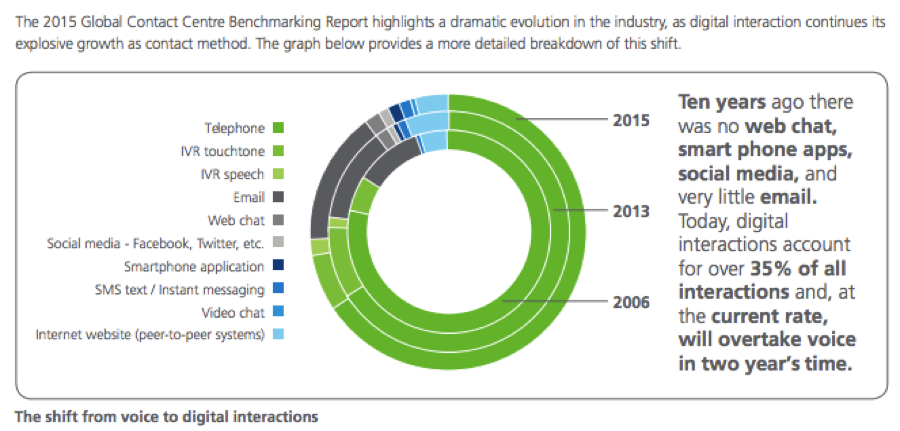Contact centers have undergone an extensive transformation over the past several years as technology and customer demands continue to rapidly evolve. What used to be an industry largely defined by the telephone (hence the once more commonly used term “call center”), the contact center industry has quickly become “digital”, expanding the number of communication channels businesses can offer their customers. And according to Dimension Data’s “2015 Global Contact Centre Benchmarking Report”, digital channels will overtake voice-based contact within the next two years, leading many to believe that going “digital” will become an absolute necessity for contact centers in the coming months.
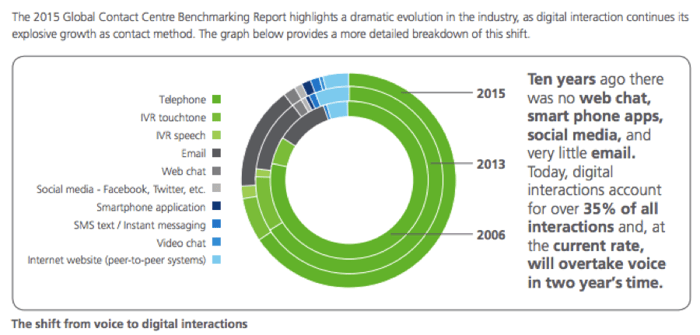
But businesses do not necessarily feel prepared for the number of changes coming their way. In fact, 40% of survey respondents say their IT does not meet current needs, and 80% say their current systems will not meet future needs. And the impact this is having on customer experience has become painfully clear—despite the fact that 75% of companies recognize service as a competitive differentiator (up 18% in two years), CSAT (customer satisfaction) levels are down for the 4th year in a row. So how can contact centers more effectively migrate to a digital model to help salvage and enhance their customer experience?
A few suggestions:
Adoption of a hosted or cloud solution: While the majority of contact centers still rely on on-premise solutions, 70% have stated the desire to transition to a cloud alternative. Praised for their scalability, reliability, fast-deployments, and cost effectiveness, cloud contact center solutions have leveled the playing field, allowing smaller businesses with less resources to compete with, and in many cases outperform, large enterprise businesses. And with these solutions, businesses will obtain the framework to better manage their digital channels and customer interactions.
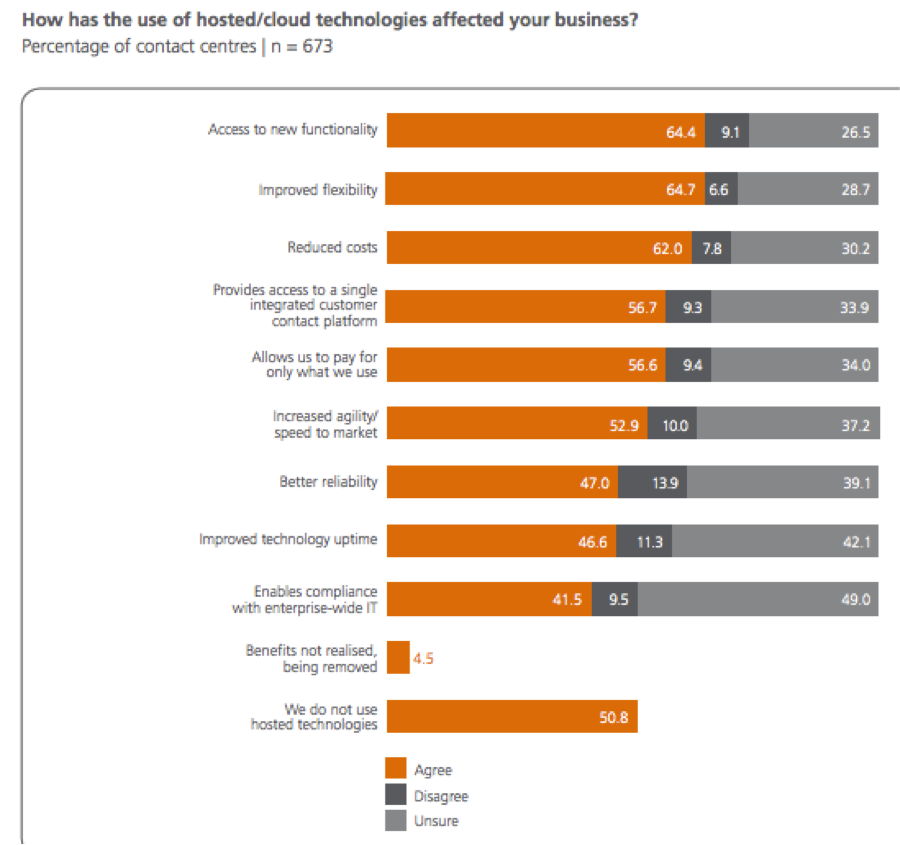
Support for Cross-Channel Customer Journeys: Over half of organizations plan to soon feature at least 8 channels within their contact center (7 of which are digital). But the simple act of offering a number of contact channels in insufficient in meeting the expectations of today’s customers—channels should be integrated and easily accessed by both agents and customers, allowing for the seamless migration from one channel to another during an interaction, something cloud can help facilitate. Agents should also be cross-functional—only 35% of agents are currently multi-skilled across voice and non-voice channels—which can limit their ability to support cross-channel customer journeys.
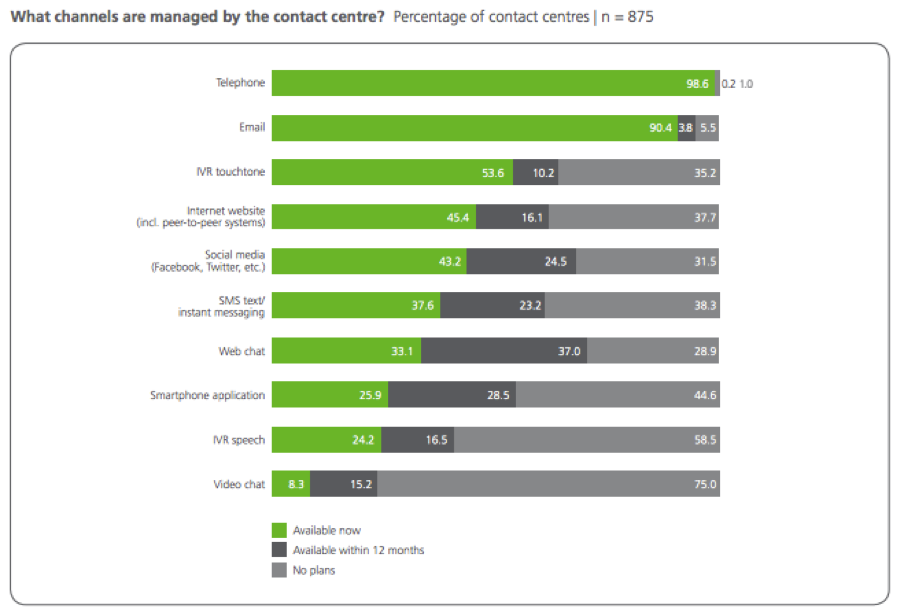
Integration of Information Systems: Today, more than half of unresolved customer needs are the direct result of an agent’s inability to access relevant data during an interaction. And while businesses more often than not store this information about their customers, it is typically siloed in different departments, contact channels, and information systems. But by integrating disparate SaaS solutions (CRM, call center software, customer service management platform), help bridge the gap between departments and empower your agents to increase first contact resolutions across all digital channels.
Enhanced Business Intelligence: Despite the fact that 53% of businesses highlight analytics as doing most to reshape the contact center industry in the next 5 years—close to half do not monitor their contact center’s performance. But there are a number of ways supervisors can better understand how their contact centers are performing and use it to better their organizations and enhance the digital experience. Check-out the most commonly used methods below.
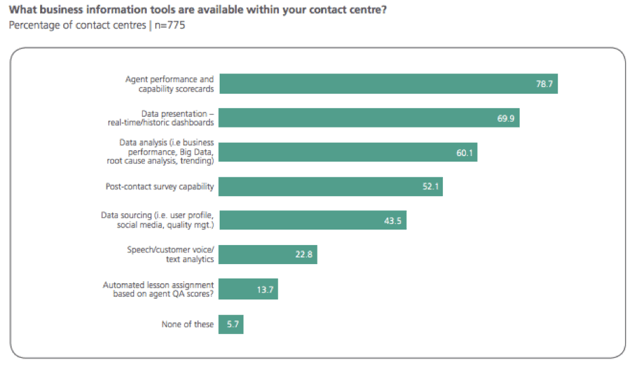
Emphasis on Social Media: While all digital channels are equality important and necessary, there is one that appears to be taking the customer service arena by storm—social media. In fact, 90% of customer service inquiries are expected to be handled through social channels by 2020. And by ensuring your business has a consistent and adequate means of monitoring the social activities of its customers and routing these posts into the contact center, feel more prepared for where the future of customer service is headed.
